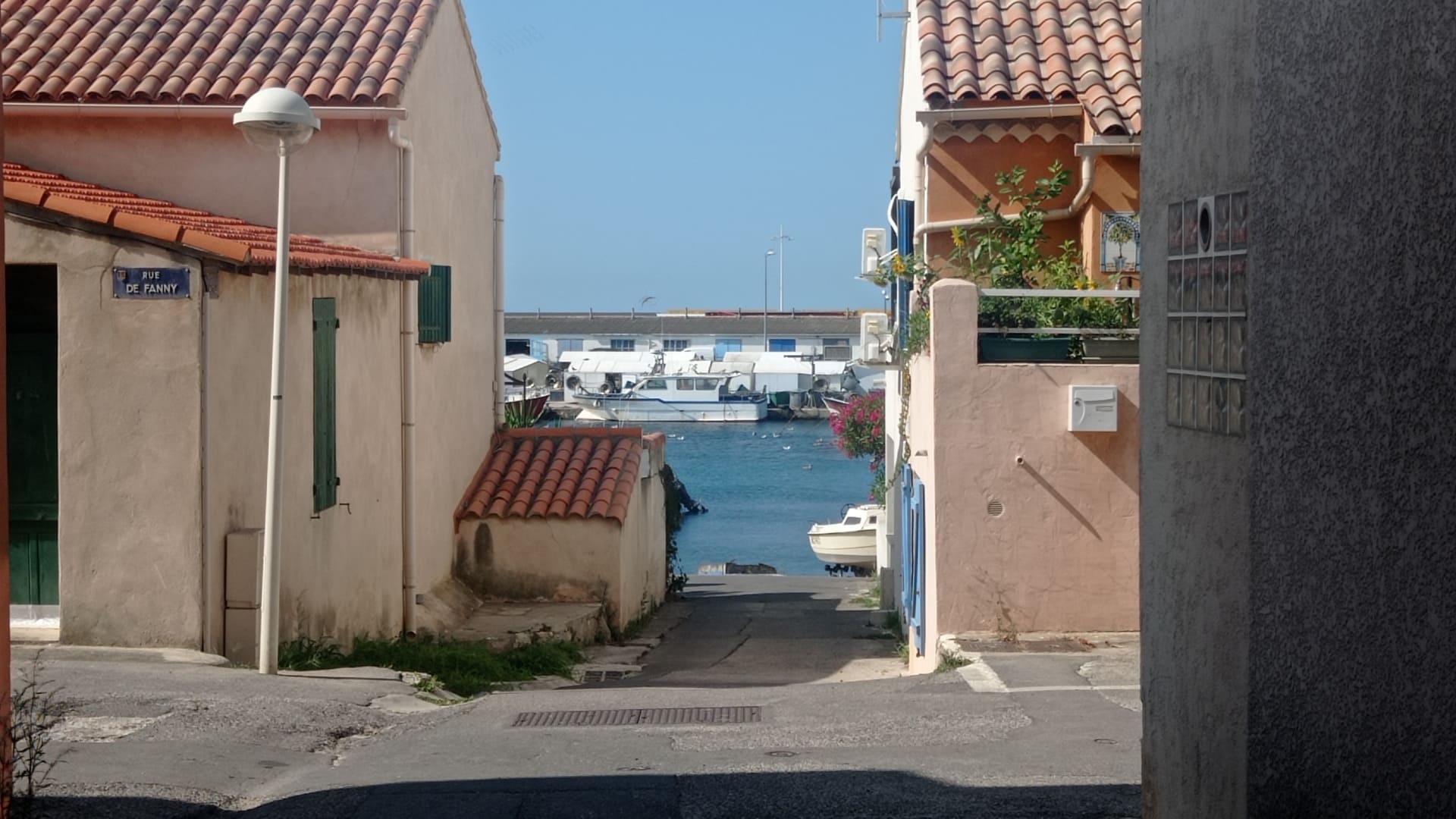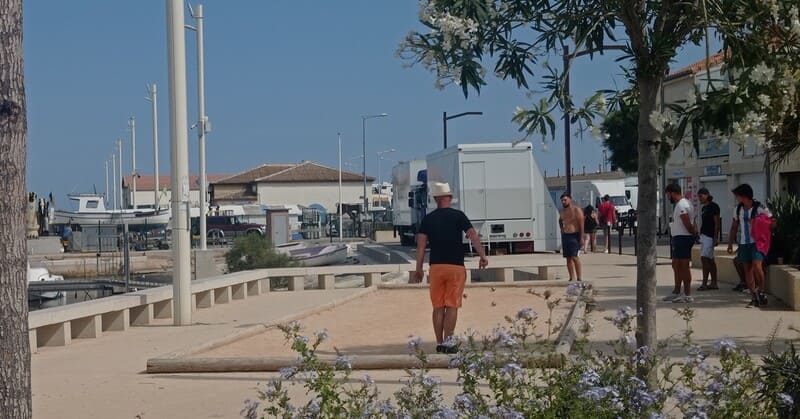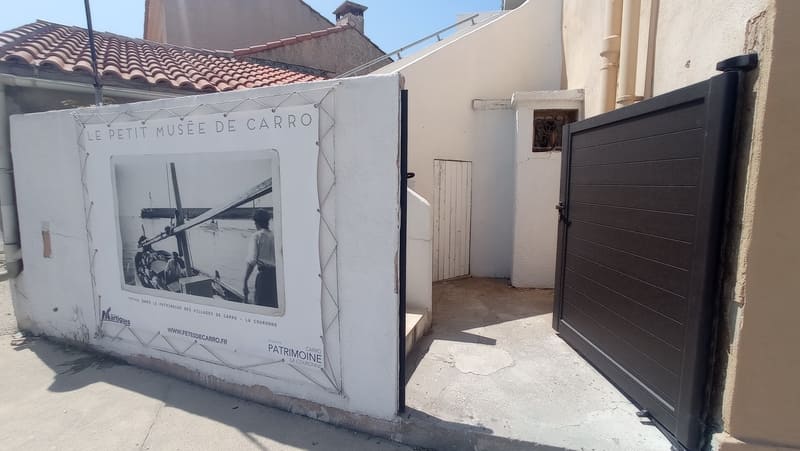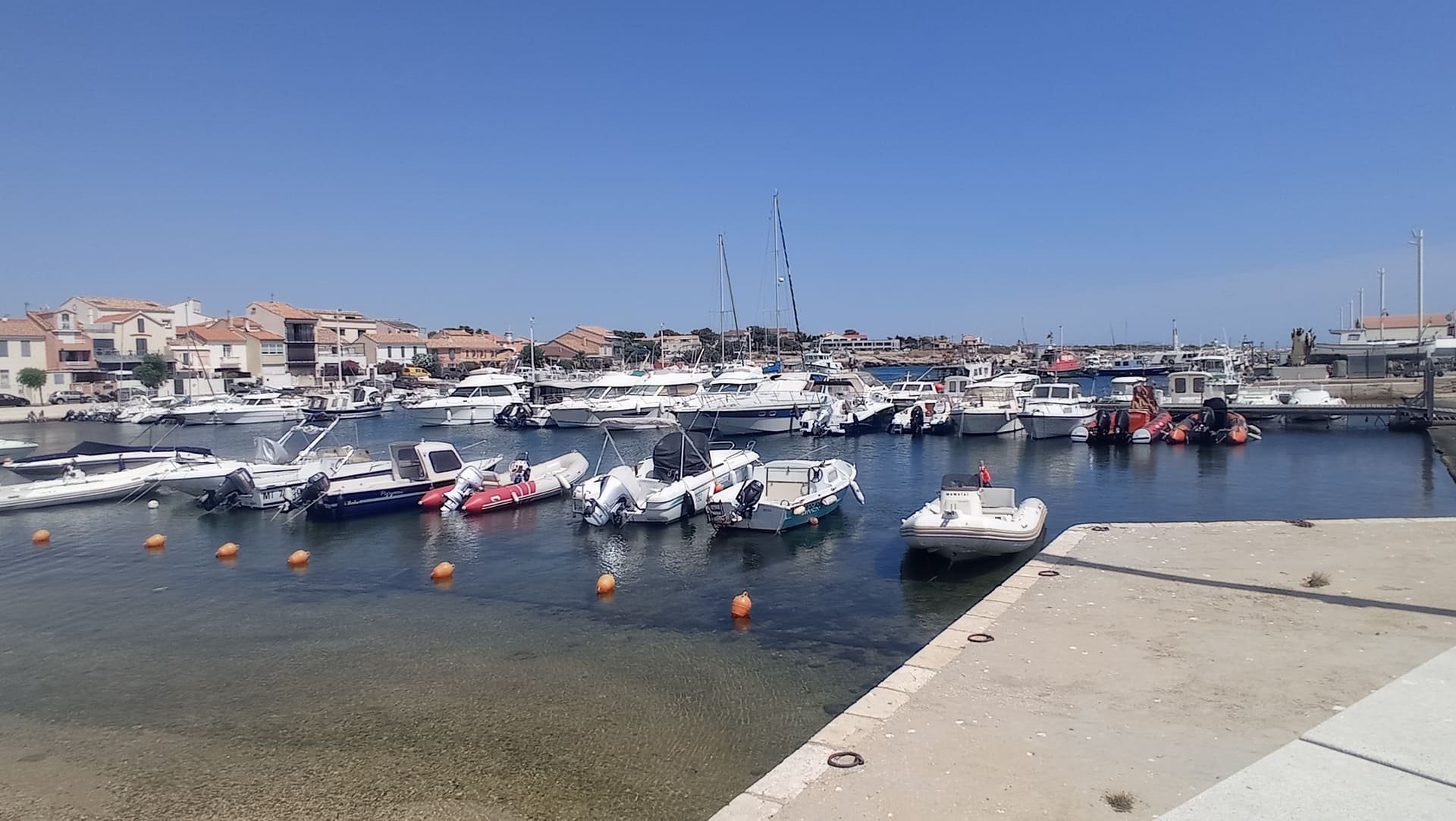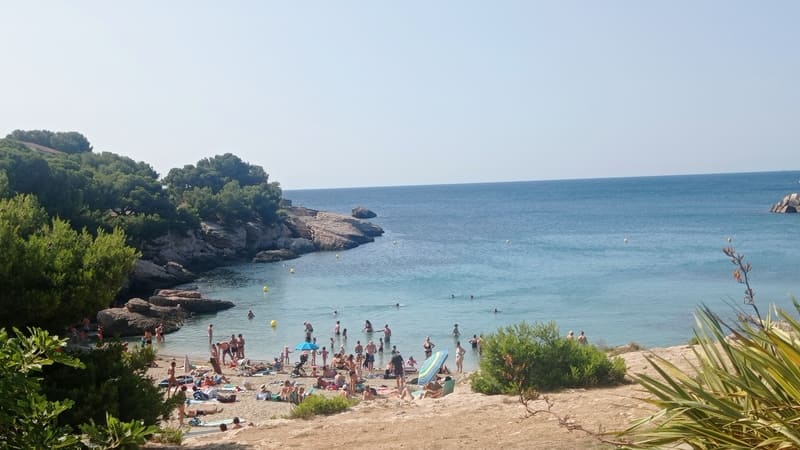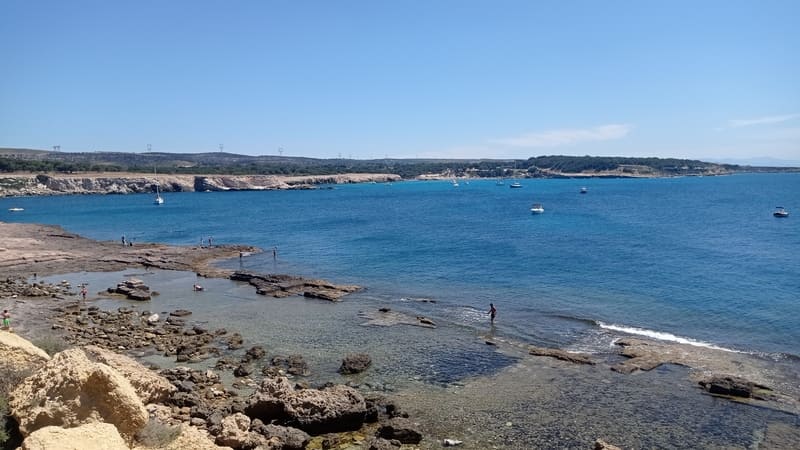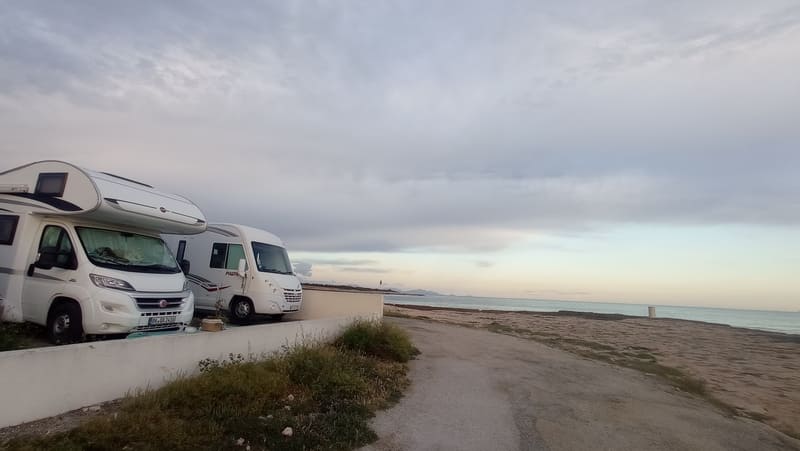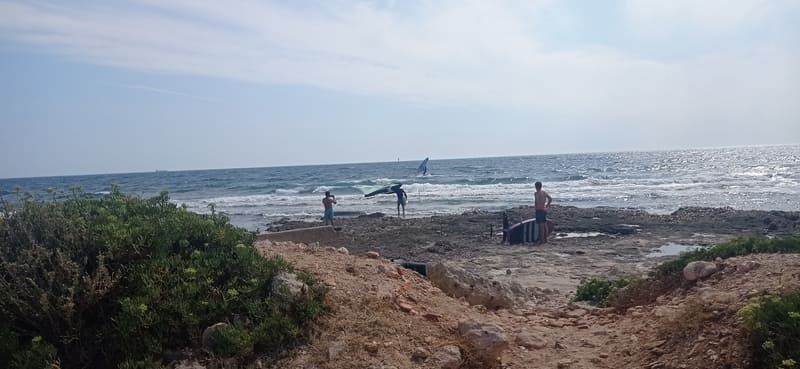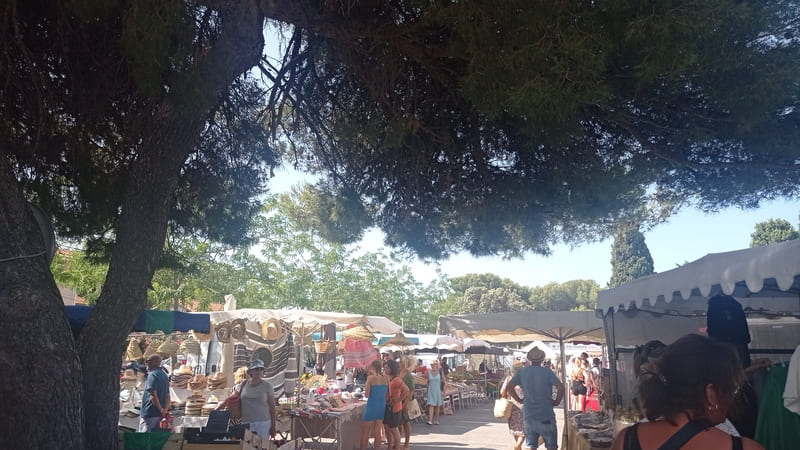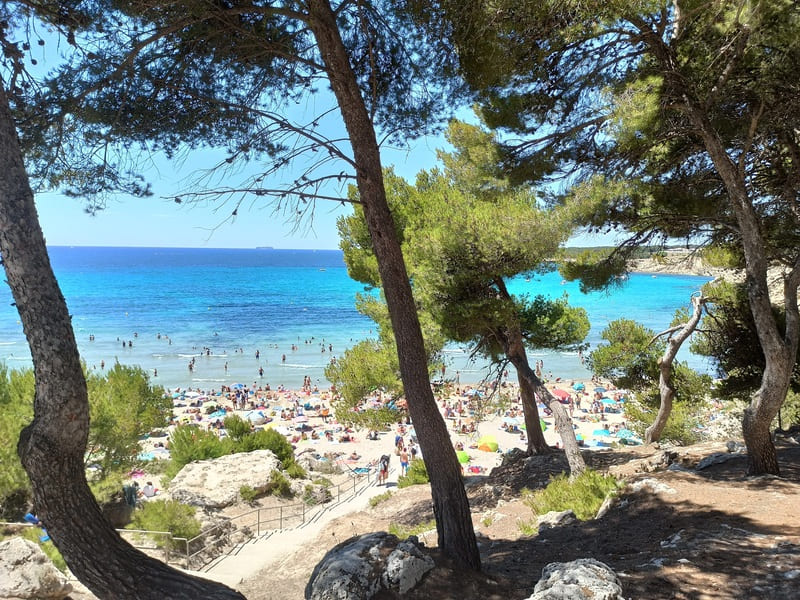Carro, a pearl of the Côte Bleue
As you continue your walk along the port, your eye will inevitably be drawn to a bicolored boat with striking colors. This is the vessel of the SNSM (National Sea Rescue Society), easily recognized by its vibrant hues. Docked at the heart of the port, near the rescue station, it stands as a testament to the courage of those who safeguard sailors and boaters.
Nearby, facing the horizon, a simple stone cross honors the memory of lost sailors. A moving place that reminds visitors of how the sea—both generous and untamable—has shaped the history and soul of Carro.
What to see on the port of Carro?
The small museum of Carro hosts the exhibition "Between sea and hills", an authentic museum where we are keen to preserve the past... We find there in particular objects having served in the trade of the land and the sea ; from antiquity to contemporary times. Fishing tools rub shoulders with the natural treasures of the seabed and the cargoes of stranded ships.The Circle of Fishermen was a rare distraction for the people of Carro. Created in 1976, one became a member only by living in the village of Carro. It then became a place of meetings, exchanges and festivities. Even today, the inhabitants of Carro (or those of close families) meet there in the afternoons to share a pastis around a belote.
The SNSM rescue station was created in 1868. Their boat is moored in the middle of the port because it was too big for the old shelters. The cross erected in 1863 offers the blessing and protection of sailors. It was placed here because the village of Carro, being dependent on La Couronne, has no church.
Memories of Carro?
The Carro fish market is open all year round, every morning from 8:30 am. It is the wives of the fishermen who went to sea that very morning who run the stands. The quantity of fish depends on the catch of the day, it is better to go early!A memory of tuna fishing often told by the elders. We spotted a school of tuna thanks to the agitation of the gulls in the sky. The alert was then given. About twenty sailors gathered and surrounded the fish with the force of the oars. The latter were then trapped and had no choice but to run into the net. A purely traditional fishing technique. We brought the tuna back to the wharf and left to dry in the open air. The day's harvest was then divided by the number of participants. Some fishermen resold them at the Criée in Marseille. In 1956, the fishermen of Carro broke the record by bringing back 7000 tuna in a single catch.
In the past, fishing nets were made of cotton, hemp and linen. They were tinted with a highly tannic decoration of maritime pine bark: the rusque. A dyehouse had been built on the port in 1947. It was the one who had the most threads to dye who had to prepare the cauldron. In 1960, the material used for the design of fishing nets changed. Nylon was then used.
Today, there are more than 40 fishermen still referenced at the Martigues Fishing Prud'homie. Passed down from generation to generation, the professional fishermen of Martigues still find their happiness between the Etang de Berre and the Mediterranean Sea. In the rocky area, there are sars, sea bass, sea bream, salem and red mullet. In summer and autumn, there are also fish for soup: scorpionfish, wrasses and serrans.
Carro’s port is also the perfect starting point for a fresh-air adventure. Lace up your sneakers and follow the coastal trail, winding through the wild coves and inlets of the Côte Bleue all the way to Sausset-les-Pins. Between the deep blue sea and the scent of the scrubland, this hike offers a breathtaking natural spectacle.
For more experienced hikers, the journey can be extended along the La Couronne / Carro stone quarry loop. This unique route allows you to explore 8 of the 18 historic quarry sites, each a witness to centuries-old craftsmanship. The most famous, the Baou Tailla quarries, perched above Carro beach, preserves its unfinished rosy and ochre stones as a living memory of the stonecutters who shaped the village’s history.
Did you know? The name "Carro" derives from the Celtic word "Kar" which means "stone". Just as "Couronne" is close to the term "Cairon" which means "cut stone" in Occitan.
A few stories about the life of the stone tracers of Carro
The work of the stonecutters, known as “traceurs,” left a lasting mark on Carro and La Couronne. From the port, the quarried blocks were shipped to Marseille, contributing to the construction of prestigious monuments. From antiquity to the 19th century, these stones helped build iconic sites such as Saint-Victor Abbey, the City Hall, and the renowned Vieille Charité. Valued by travelers, sailors, and merchants, this high-quality stone shaped Mediterranean history for centuries. Carro’s port offered a natural advantage: the northwestern Mistral wind facilitated the transport of goods, including heavy stone blocks. Today, this heritage still gives the village a unique aura, blending artisanal memory and maritime tradition.
18 mining sites have been identified between La Couronne and Carro. It is possible to discover 8 of them during the Cap Couronne Big Loop hike and the Stone Quarries local loop. Throughout the course, one can discover the quarries of Soubrat, the quarries of Arquierons, the quarry of Auffrans, the quarries of Pointe de Carro, the quarry of Beaumaderie, the quarry of Couronne-Vieille, the quarry of Verdon and finally, the quarries of Baou Tailla.The beautiful hikes on Carro - La Couronne
- The coastal path extends over 13 kilometers. It is dotted with 42 information panels to present the fauna and flora identified on the trail. From Carro beach to Sainte-Croix beach, the coastal path offers beautiful views.
- The Crown Stone Quarries Loop is part of one of the 8 local loops of the Grand Sentier de la Côte Bleue. Over a distance of 8 kilometres, discover 3 continental quarries and 5 coastal quarries to learn all about this ancient work. The second local loop of this great trail related to the history of stone quarry workers is the 24 kilometer Cap Couronne Great Loop. You can cross the villages of Carro and La Couronne, passing by the beaches of Sainte-Croix and the port of Carro.
Want to enjoy Carro longer?
The motorhome area is open year-round. Thanks to its 78 pitches, it welcomes holidaymakers near Carro beach, facing swimmers and surfers. The owners of seasonal rentals in the village of Carro are also numerous. Consult our selection of houses and apartments for rent with sea view to enjoy the calm of Carro.The greenway of Carro extends over 1.5 km, secure, it is accessible to cyclists and pedestrians. Lined with educational terminals, this walk offers panoramic views of the Mediterranean Sea. You will not be disappointed !
What about fishing?
Access to fishing and nautical activities is highly regulated. Nearby is the preserved area of Cap Couronne. It is a marine reserve set up by the sailors of Carro under the leadership of the Côte Bleue Marine Park team and which covers 210 ha. The presence of a Posidonia meadow on the Mediterranean coast is an opportunity to develop biodiversity (it still extends over more than 1000 ha). Fishing is totally prohibited.
The villages around Carro
Adjacent to Carro, the village of La Couronne shares a history closely linked to the stonecutters. In 1669, they helped enlarge the old chapel, now the church of La Couronne. Records from the stonecutters’ guild reveal the presence of notable families, like the Peyrerons, who settled permanently in the village and left a lasting mark on its history.
La Couronne is also steeped in spiritual legend. It is said that Mary Magdalene, imprisoned by the Palestinians, was set adrift at sea before landing on these shores. The site, regarded as a Holy Land, attracted pilgrims for centuries. Today, you can follow the trail In the Footsteps of Mary Magdalene, linking Martigues to Carry-le-Rouet, to explore major Christian sites and the stunning landscapes the Saint is said to have traversed during her preaching in Provence.
The emblematic sites of La Couronne
• The Semaphore was built in 1887 under Napoleon III. It once housed communication networks to fight against invaders from the Mediterranean coast. It has the tallest watchtower of 27 meters. Still functional, it allows the French Navy to carry out port surveillance missions (Marseille-Fos) and to alert the emergency services in the event of shipwreck at sea. The last representative of the three semaphores on the coast, it is one of the last In France.
• Just a short distance from the protected natural area of Cap Couronne lies the mysterious Pointe Riche. Its name comes from a local legend: a ship carrying gold ingots supposedly sank in its waters. A more plausible origin links it to the Italian word riccio, meaning “sea urchins,” referring to the traditional urchin fishing practiced here. Standing proudly on the point, the Cap Couronne lighthouse rises 33 meters above the sea. A true stone and light sentinel, it has guided generations of sailors along the Côte Bleue, like a watchful lynx eye keeping over the horizon.
• La Couronne station is served by the Côte Bleue train inaugurated in 1915. This new railway line has made it possible to open up isolated villages and to replace the diligences by which it was necessary to count 8 hours by road to reach Marseille - Carro. The creation of a train transport also put an end to the coastal navigation company: "The new coastal", a small steamer linking Marseille to Cap Couronne. The crossing time was rarely fixed with recurring breaks in the coastal ports which lasted more or less long depending on the packages to be delivered.
• The Côte Bleue train joins Marseille - Miramas via Martigues and serves the villages of the Côte Bleue: Sausset-les-Pins, Carry-le-Rouet, Ensuès-la-Redonne with which the Franco-Swiss writer, Blaise fell in love Candrars. 61 km long, the line has the particularity of crossing 48 engineering structures: 4 metal bridges, 18 viaducts, 23 tunnels and 3 underground galleries. Its construction engineer, Paul Séjourné was also nicknamed "The Gustave Eiffel of masonry bridges".
• The Chapel of Sainte-Croix overlooks Sainte-Croix beach, the favorite beach of many holidaymakers. There is the vestige of a 12th century chapel, built on the site where Saint-Lazare (shipwrecked with Marie-Madeleine) once planted his cross. Sainte-Croix beach is twinned with La Saulce beach, which welcomed the Duchess of Barry in 1832. Follow the route “In the footsteps of Marie-Madeleine” to relive history.
The chapel of Saint-Julien-les-Martigues is located in the village of Saint-Julien. Built during the 1st century AD, it is above all famous for its bas-relief embedded in its facade. The lands of Saint-Julien, still very agricultural, will allow you to meet our local producers.
For an authentic and tasty break, stop at the Saint-Ju farm, where a goat farmer will introduce you to his fresh cheeses. Don’t miss the famous Brousse du Rove (AOP), a true local treasure, known for its delicate texture and flavor. Nearby, another experience awaits at the cooperative winery, where you can taste the latest vintages of Coteaux d’Aix-en-Provence (AOP) wines. Here, winemakers continue to honor ancient traditions, as with the “Mas du Moulin” red, aged in terracotta pots, offering a rare authenticity in every sip.
Every Saturday morning, we meet you in the heart of the village, on the main square to savor delicious products from our local producers. Baker's bread with organic flour, fresh cheeses and vegetables from the St-Ju farmhouse garden, peasant fruits and vegetables, shellfish and fresh fish.... Welcome to the Saint-Julien-les-Martigues farmers' market.
The charm of the village of Saint-Pierre-les-Martigues
The oppidum of Saint-Pierre and its church are located 7km from Martigues. Both are located on a hill, in the heart of an agricultural plain. You will be able to discover there the vestiges of a habitat and the fortifications of a Gallic oppidum, sign of an old Gallo-Roman agglomeration.
Saint-Pierre-les-Martigues is also an agricultural land, it is quite naturally that the agroecological farm Aïoli Caganis has set up its quarters there. Open to the public with a shop, a village of producers on Saturday mornings and unusual dinners from field to plate, this is the place to visit absolutely to be in the heart of nature.
Want to travel the Côte Bleue from Carro to Marseille?
Cross the villages departing from Carro / La Couronne along the most beautiful roads on the Mediterranean coast.



